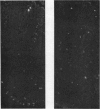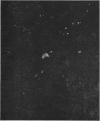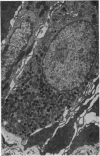Abstract
Immunohistochemical studies using an antiserum to a pure porcine vasoactive intestinal peptide, possessing no cross reactivity against the related hormones glucagon, secretin, and gastrin-inhibitory peptide, revealed a wide distribution of vasoactive intestinal peptide cells throughout the entire length of the mammalian and avian gut. The highest numbers of cells were present in the small intestine and more particularly in the large intestine in all species investigated.
Three types of endocrine cell in the mammalian gut are sufficiently widely distributed to be considered as the sites for production of vasoactive intestinal peptide. In the avian gut there are only two identifiable cell types.
Sequential immunofluorescence and silver staining showed, in the bird, that the enterochromaffin (EC) cell was not responsible. This procedure could not be used in our mammalian gut samples but here serial section immunofluorescence for enteroglucagon and vasoactive intestinal peptide indicated that the two cells were not identical and that each was differently localized in the mucosa.
These results leave the D cell of the Wiesbaden classification as the most likely site for the production of vasoactive intestinal peptide. The final identification must come from successful immune electron cytochemistry but this has not yet been achieved.
Full text
PDF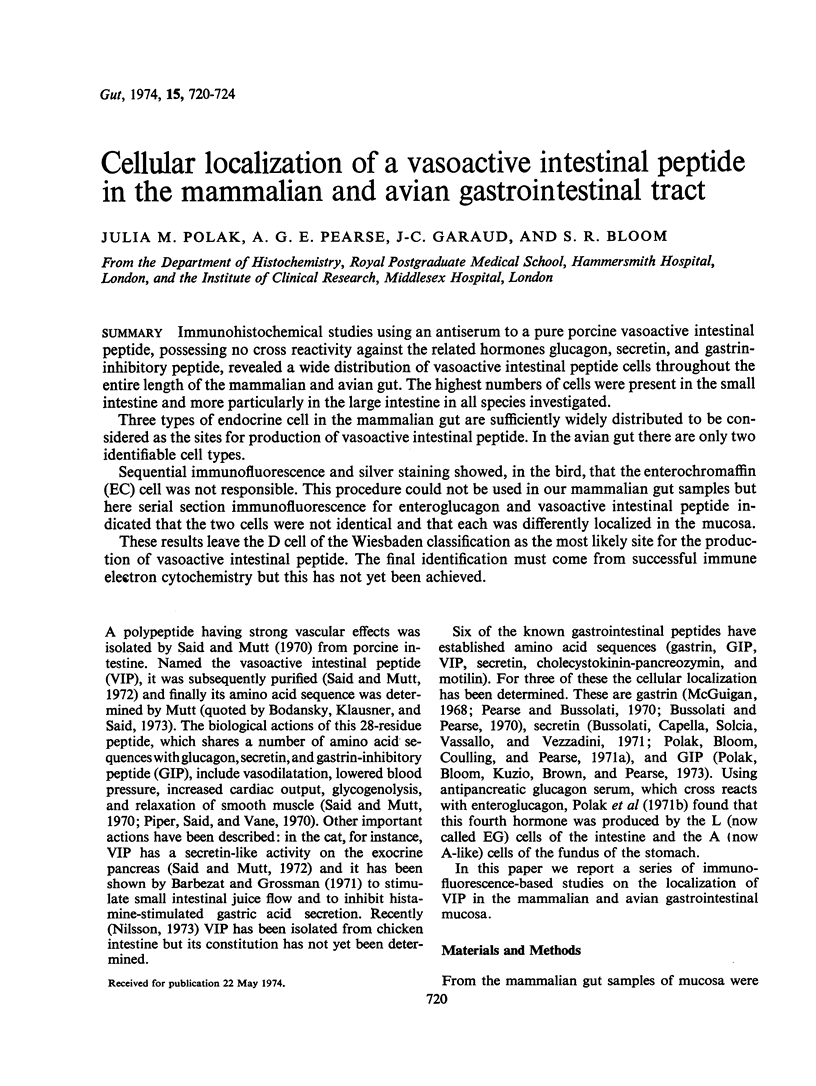
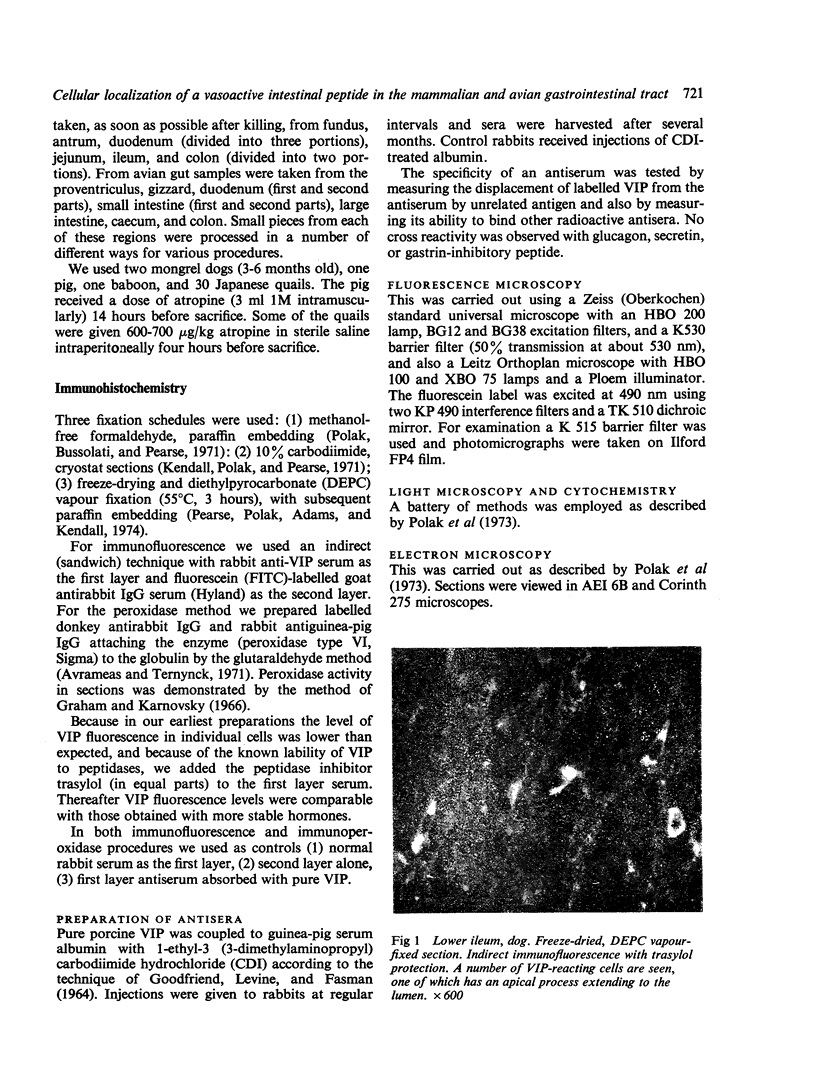
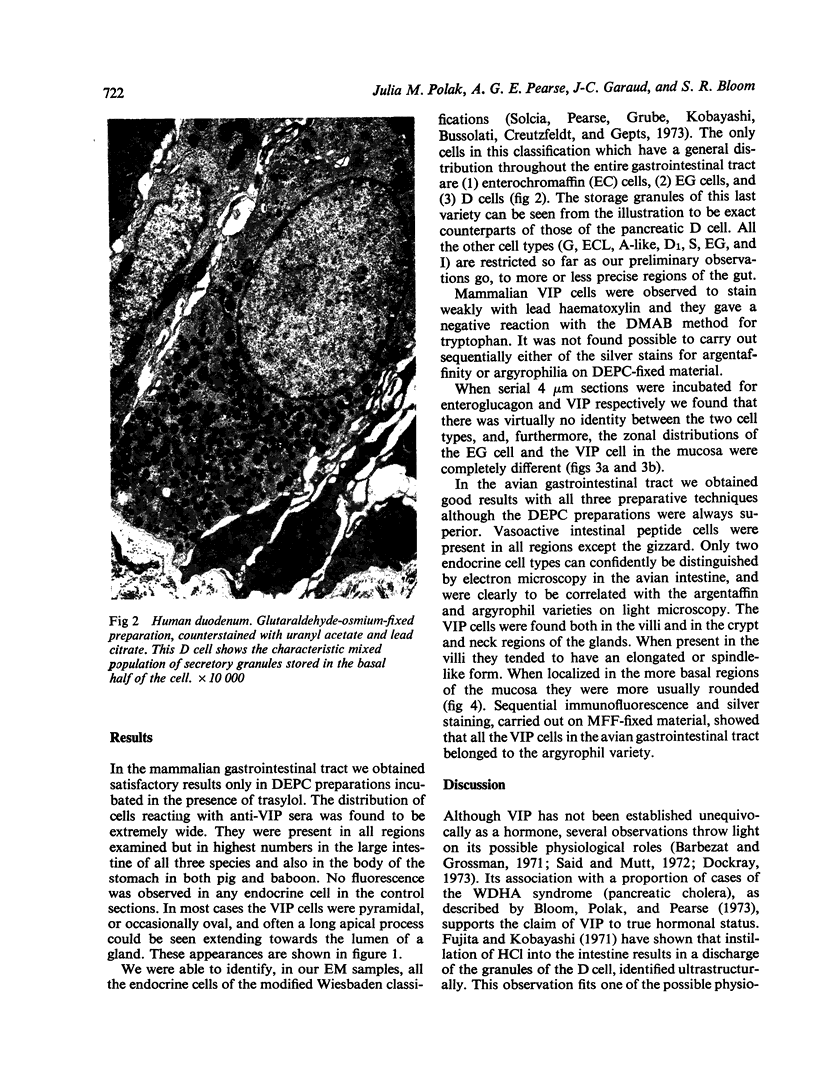
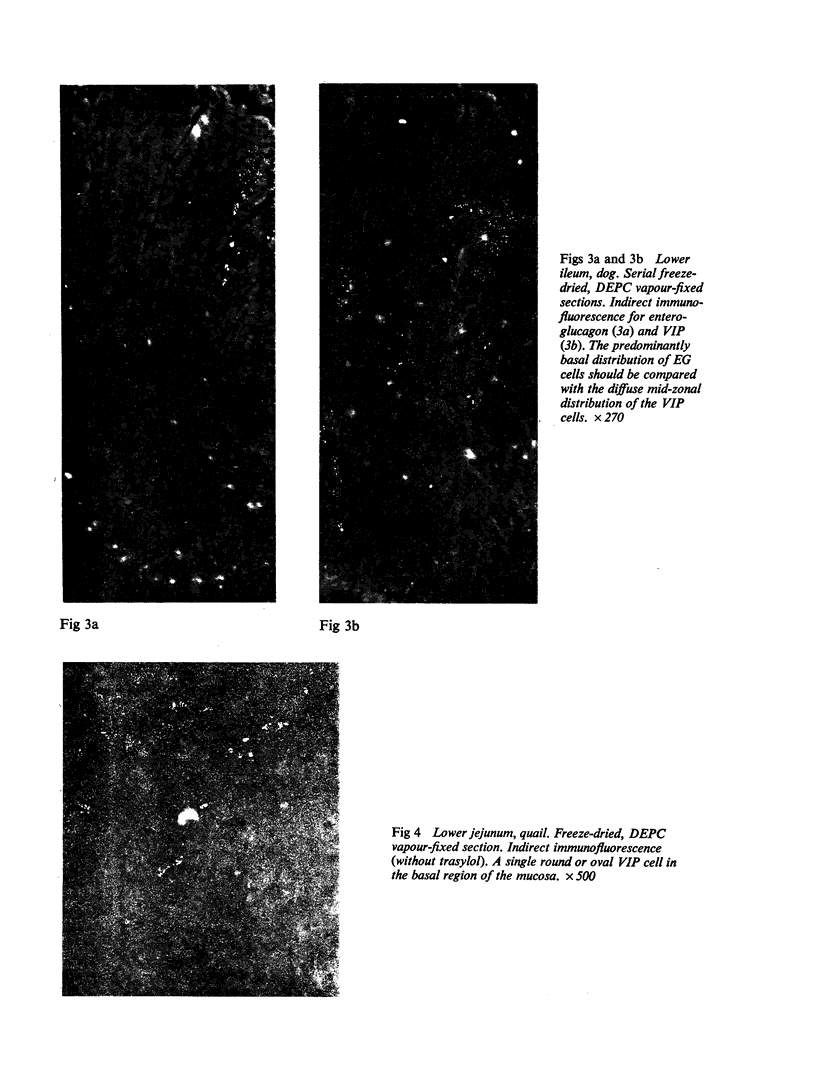
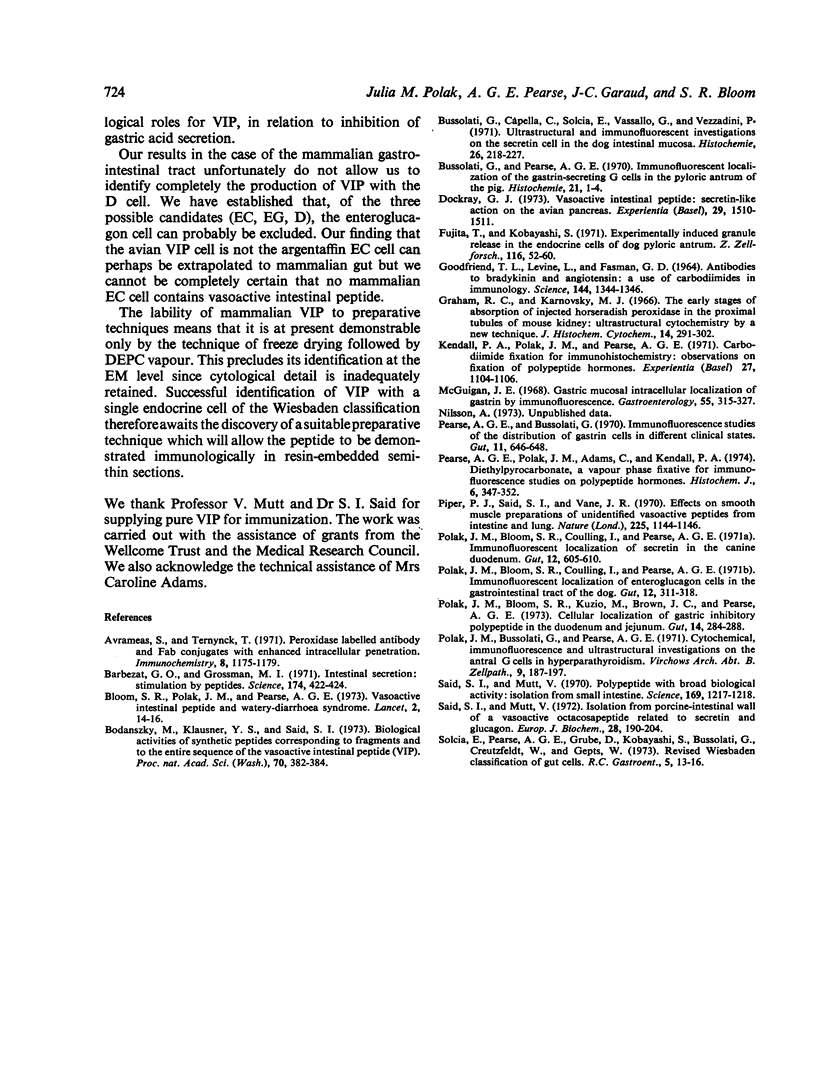
Images in this article
Selected References
These references are in PubMed. This may not be the complete list of references from this article.
- Avrameas S., Ternynck T. Peroxidase labelled antibody and Fab conjugates with enhanced intracellular penetration. Immunochemistry. 1971 Dec;8(12):1175–1179. doi: 10.1016/0019-2791(71)90395-8. [DOI] [PubMed] [Google Scholar]
- Barbezat G. O., Grossman M. I. Intestinal secretion: stimulation by peptides. Science. 1971 Oct 22;174(4007):422–424. doi: 10.1126/science.174.4007.422. [DOI] [PubMed] [Google Scholar]
- Bloom S. R., Polak J. M., Pearse A. G. Vasoactive intestinal peptide and watery-diarrhoea syndrome. Lancet. 1973 Jul 7;2(7819):14–16. doi: 10.1016/s0140-6736(73)91947-8. [DOI] [PubMed] [Google Scholar]
- Bodanszky M., Klausner Y. S., Said S. I. Biological activities of synthetic peptides corresponding to fragments of and to the entire sequence of the vasoactive intestinal peptide. Proc Natl Acad Sci U S A. 1973 Feb;70(2):382–384. doi: 10.1073/pnas.70.2.382. [DOI] [PMC free article] [PubMed] [Google Scholar]
- Bussolati G., Capella C., Solcia E., Vassallo G., Vezzadini P. Ultrastructural and immunofluorescent investigations on the secretin cell in the dog intestinal mucosa. Histochemie. 1971;26(3):218–227. doi: 10.1007/BF00305655. [DOI] [PubMed] [Google Scholar]
- Bussolati G., Pearse A. G. Immunofluorescent localization of the gastrin-secreting G cells in the pyloric antrum of the pig. Histochemie. 1970;21(1):1–4. doi: 10.1007/BF00304798. [DOI] [PubMed] [Google Scholar]
- Dockray G. J. Vasoactive intestinal peptide: secretin-like action on the avian pancreas. Experientia. 1973 Dec;29(12):1510–1511. doi: 10.1007/BF01943886. [DOI] [PubMed] [Google Scholar]
- Fujita T., Kobayashi S. Experimentally induced granule release in the endocrine cells of dog pyloric antrum. Z Zellforsch Mikrosk Anat. 1971;116(1):52–60. doi: 10.1007/BF00332857. [DOI] [PubMed] [Google Scholar]
- GOODFRIEND T. L., LEVINE L., FASMAN G. D. ANTIBODIES TO BRADYKININ AND ANGIOTENSIN: A USE OF CARBODIIMIDES IN IMMUNOLOGY. Science. 1964 Jun 12;144(3624):1344–1346. doi: 10.1126/science.144.3624.1344. [DOI] [PubMed] [Google Scholar]
- Graham R. C., Jr, Karnovsky M. J. The early stages of absorption of injected horseradish peroxidase in the proximal tubules of mouse kidney: ultrastructural cytochemistry by a new technique. J Histochem Cytochem. 1966 Apr;14(4):291–302. doi: 10.1177/14.4.291. [DOI] [PubMed] [Google Scholar]
- Kendall P. A., Polak J. M., Pearse A. G. Carbodiimide fixation for immunohistochemistry: observations on the fixation of polypeptide hormones. Experientia. 1971 Sep 15;27(9):1104–1106. doi: 10.1007/BF02138909. [DOI] [PubMed] [Google Scholar]
- McGuigan J. E. Gastric mucosal intracellular localization of gastrin by immunofluorescence. Gastroenterology. 1968 Sep;55(3):315–327. [PubMed] [Google Scholar]
- Pearse A. G., Bussolati G. Immunofluorescence studies on the distribution of gastrin cells in different clinical states. Gut. 1970 Aug;11(8):646–648. doi: 10.1136/gut.11.8.646. [DOI] [PMC free article] [PubMed] [Google Scholar]
- Pearse A. G., Polak J. M., Adams C., Kendall P. A. Diethylpyrocarbonate, a vapour-phase fixative for immunofluorescence studies on polypeptide hormones. Histochem J. 1974 May;6(3):347–352. doi: 10.1007/BF01312253. [DOI] [PubMed] [Google Scholar]
- Piper P. J., Said S. I., Vane J. R. Effects on smooth muscle preparations of unidentified vasoactiv peptides from intestine and lung. Nature. 1970 Mar 21;225(5238):1144–1146. doi: 10.1038/2251144a0. [DOI] [PubMed] [Google Scholar]
- Polak J. M., Bloom S. R., Kuzio M., Brown J. C., Pearse A. G. Cellular localization of gastric inhibitory polypeptide in the duodenum and jejunum. Gut. 1973 Apr;14(4):284–288. doi: 10.1136/gut.14.4.284. [DOI] [PMC free article] [PubMed] [Google Scholar]
- Polak J. M., Bloom S., Coulling I., Pearse A. G. Immunofluorescent localization of enteroglucagon cells in the gastrointestinal tract of the dog. Gut. 1971 Apr;12(4):311–318. doi: 10.1136/gut.12.4.311. [DOI] [PMC free article] [PubMed] [Google Scholar]
- Polak J. M., Bloom S., Coulling I., Pearse A. G. Immunofluorescent localization of secretin in the canine duodenum. Gut. 1971 Aug;12(8):605–610. doi: 10.1136/gut.12.8.605. [DOI] [PMC free article] [PubMed] [Google Scholar]
- Polak J. M., Bussolati G., Pearse A. G. Cytochemical, immunofluorescence and ultrastructural investigations on the antral G cells in hyperparathyroidism. Virchows Arch B Cell Pathol. 1971;9(3):187–197. doi: 10.1007/BF02894045. [DOI] [PubMed] [Google Scholar]
- Said S. I., Mutt V. Isolation from porcine-intestinal wall of a vasoactive octacosapeptide related to secretin and to glucagon. Eur J Biochem. 1972 Jul 13;28(2):199–204. doi: 10.1111/j.1432-1033.1972.tb01903.x. [DOI] [PubMed] [Google Scholar]
- Said S. I., Mutt V. Polypeptide with broad biological activity: isolation from small intestine. Science. 1970 Sep 18;169(3951):1217–1218. doi: 10.1126/science.169.3951.1217. [DOI] [PubMed] [Google Scholar]



